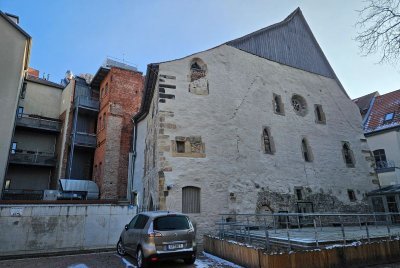
The site itself and its components have been covered extensively in the previous reviews. I will focus on the visitor experience in 2025.
All three components are right in the center of Erfurt next to its landmark, the Krämerbrücke. One day in Erfurt is enough to visit everything of interest, including a former Stasi prison and the churches (former tentative site). Erfurt was much nicer than I expected and deserves a stop, regardless of the WHS.
The old synagoge is now a museum only, meaning its open in Saturdays. Opening hours are 10:00-18:00, except Monday. The Germans seem to hate Mondays so much, the close the whole country that day.
To visit the Mikveh, you need to join a free public tour. You don’t really need to “join it”, but only the tour guide will open the door to give you access. There are tours every Thursday and Friday at 14:00. On Saturdays and Sundays, you can join the second part of the combined tour. Mikveh visit starts around 11:45.
We joined the full combined tour on Saturday, starting 10:15 and including the old synagoge. Only join this tour, if you are fluent in German. The tour is really detailed and reeeally long. We learned about every detail outside and inside the synagogue, including the treasure and all about the Jewish community in Erfurt during the middle ages.
Photography is only forbidden in the basement (because of the treasure). In all other parts of the …
Keep reading 0 comments
In 2012, while visiting Berlin for a job interview, I took the opportunity to visit three locations of the Modernism Housing Estates before my interview. The interview was at lunchtime, so I had ample time in the morning. I began my visit at Schillerstraße, then walked to Weiße Stadt before taking a bus and train to Wohnsiedlung Carl Legien.
My impression of these sites at the time aligns well with Ian's summary: In the suburbs of post World War 2 Germany, they look pretty common place, a testament to the significant influence of the architects (most notably Taut and Scharoun) and ideas behind them. What sets these early examples apart from their post-war imitations is their superior design. They exhibit thoughtful use of colour and form, a sense of artistry and artisanship, and a social commitment to enhancing workers' lives — qualities often missing in later copies.
These housing estates belong to the Neues Bauen movement, which is often confused with Bauhaus. While the two are closely related, they are distinct. While Bauhaus aimed to create architecture for the masses, it largely ended up catering to the wealthy; Fagus was built by and for the factory owner, not the workers. Neues Bauen, on the other hand, successfully provided affordable, modern housing for the working class — a legacy that continues today with these housing estates still providing affordable housing to Berliners.
Turns out, I got the job and visited Berlin frequently for work, though after-work visits to these suburban locations …
Keep reading 0 comments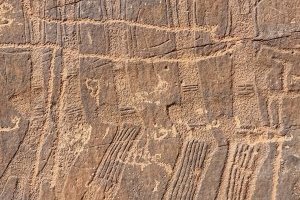
The rock paintings that you can visit are located in the town of Jubbah. The settlement itself is a very nice village with many buildings in the traditional style. I rented a car at the Hail Airport and drove 1.5 hours to the Visitor Center, located on the outskirts of Jubbah. The first thing that impresses is the surrounding landscape, it is simply amazing. Beautiful mountains surrounded by an endless desert.
At the Visitor Center, I was greeted with coffee and dates. After a short tour with three videos, you can go to see the inscriptions. Right next to the center are two mountains literally filled with them, it is simply impossible to tear yourself away. It took me more than an hour to climb them all.
After these two mountains, I advise you to return to the Visitor center and ask to open another gate to see the famous cart which is exactly like the carts from Val Camonica WHS in Lombardy (Italy). This fact is really impressive!
The second gate is a three-minute drive from the Visitor center. After viewing the cart, I advise you not to leave the gate, but to walk along the internal pedestrian road towards the Visitor center back. And here a real surprise awaits. On one of the rocks you will find a real treasure: humanoid figures from the late Paleolithic era. This is the best thing I have seen here. And in the Visitor center there is not a …
Keep reading 0 comments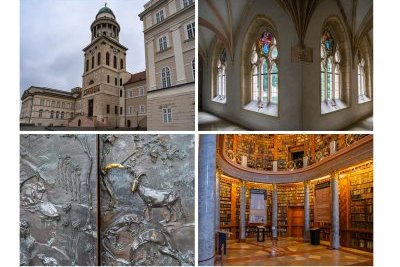
I visited Pannonhalma in November of 2024 by car from Budapest - the drive is about an hour and a half long. The only other visitors that I eventually saw were a group of high schoolers on a field trip, but the upper parking lot did not have a single available space. I was about to drive down the hill to the parking lot near the "visitor information center" when I noticed someone who looked like a repairman employed by the abbey getting into his car parked in the slightly lower-lying area by the south side of the building. That smaller lot is probably not meant for visitors, but there are no impediments to exit or entry, so I counted myself lucky to be able to park that close on a rainy day.
If I turned right from there and walked around the complex clockwise, I would reach the visitor entrance in about a minute from my parking spot. However, despite being familiar with Clyde's review below, I still walked counterclockwise to the main entrance, engaged a woman in an office by the gate in a conversation regarding access to the abbey, and was directed to continue to walk around the building, which in the end meant that I practically circumnavigated it. Somewhat unfortunately, the grandeur of such a complex can only be truly appreciated via aerial photographic shots. The ground-level approach perspectives barely hint at that.
The abbey is over a thousand years old - it was …
Keep reading 0 comments
The celebrations for the 600 years of Leuven's university (KU Leuven) have just started (on February 14-15th), so I feel this is the best occasion for a new review to shed more light upon this slumbering proposal!
There is a slight approximation in this reckoning, as the existence of the university was not continuous, and three institutions followed on another during the centuries, so that the current one (KU = katholieke universiteit, but it is more and more used as an "empty acronym") is not the same one that was founded back in 1425. However, now as in the 15th century, it represents the main driving force of Leuven, its presence overlapping with the whole city and beyond, and attracting students and scholars from everywhere (including me). It has even spawned, as it were, a new city-university in 1968, the Université Catholique in Louvain-la-Neuve, some 25 kms to the south beyond the linguistic border! Few other stories exemplify the modern essence of Belgium as this one.
Now, it is true that Leuven already boasts 2 WHS locations (a belfort in Sint Pieter and the great beguinage) and a stunning Gothic town hall (closed for renovations for the coming years), but neither is part of this tentative nomination. Or better: today the great beguinage is owned by the university and used as an ensemble of residences, but it was a completely different entity for centuries, and as such is not even nominated in the dossier. Apart from KU's main downtown buildings …
Keep reading 0 comments
Suggestion for an updated nomination: future tentative list
Joshua Tree National Park may qualify for world heritage status on its own, but the possibility of something far greater has been proposed to World Heritage USA and not only by me. I break down the protected lands in the links near the bottom, which by the way have expanded significantly since the creation of the biosphere reserve in 1984. Moreover, newly designated areas of the Mojave have greatly improved the connectivity of these diverse habitats and protected lands.
What would be better than a single nomination consisting of Joshua Tree or Death Valley? I believe a massive contiguous protected area that includes more than a dozen components such as national parks, national monuments, national preserves, and national natural landmarks would be ideal to encompass the incredible natural values of the Mojave and Colorado Deserts. Mojave, while far larger than its counterpart to the South, the Colorado Desert (a sub-region of the Sonoran Desert), both provide some of the most outstanding desert biodiversity in North America. Joshua Tree is in some ways the centerpiece because it lies in the transition zone between the Mojave and Colorado Deserts. What would be included in a 'Mojave' nomination alone would be at least 4,000,000 hectares (or about the size of Denmark).
The Anza-Borrego Desert State Park was in consideration for inclusion during the last Tentative List update of the United States in 2017. This State Park (largest in California) is …
Keep reading 0 comments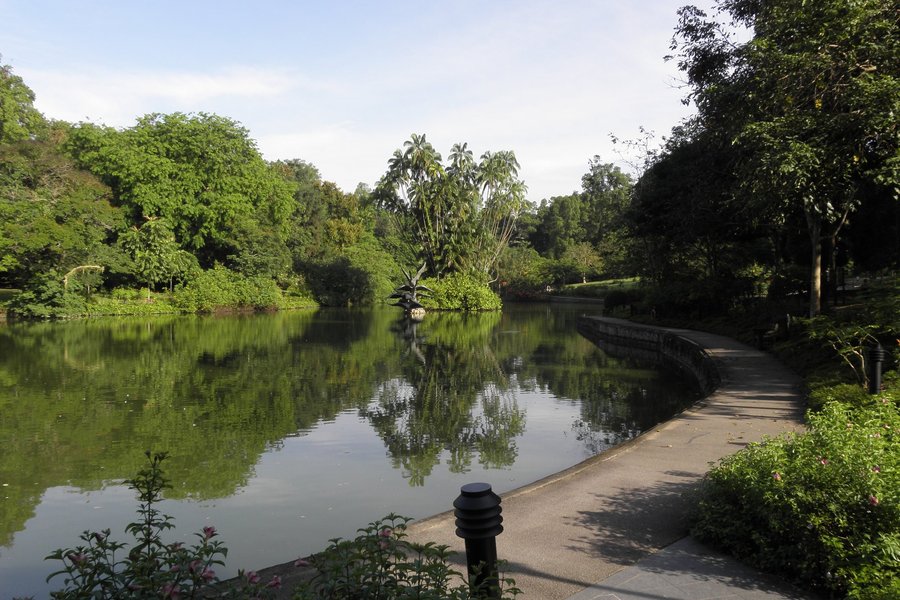
This is going to be a totally biased review since it is about the only WHS (to date) in my country.
Amongst its claim to being deserving of WHS status was that it is the only tropical botanical site and institution meeting the requisites for listing, which seems to be fair when a comparison is made with other tropical gardens. Its relatively young age might detract from its worthiness, though. That said, it is a pleasant, easy visit as it is a literal walk in the park, with modern amenities and public transportation within easy reach.
Keep reading 0 comments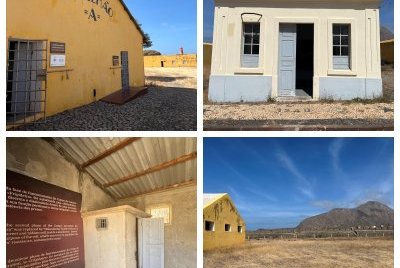
Like Cidade Velha WHS, the Tarrafal Concentration Camp lies on the main island of Cabo Verde: Santiago. It can be reached by public minibus (aluguer) from the capital Praia; they leave when full from a street near the Estado da Varzea. The 1.5h drive (600escudos) is quite pretty, as it crosses a landscape full of volcanic peaks and the Serra Malagueta Natural Park. The former Concentration Camp lies next to the main road, 2km before the town entrance of Tarrafal.
The Tarrafal Concentration Camp has been on the road to nomination for a long time. In recent years the initiative has picked up speed again, but at the moment of writing it is unknown whether they have submitted a dossier in time for the 2026 WHC. The latest news item from April 2024 underlines the government's commitment and mentions that support has been sought from Angola, Guinea-Bissau and Portugal (the three other countries that had political prisoners incarcerated here) to create a transnational candidacy. That support will be moral and financial I guess, I don’t think additional components in those countries will be added.
The site itself, which requires a modest 200 escudos (1,90 EUR) entrance fee, has been ready for an international audience already for a couple of years. It was on the World Monuments Watch of 2006, turned into a museum in 2009 and fully restored with Portuguese help in 2021. It now looks much better preserved than in earlier photos …
Keep reading 0 comments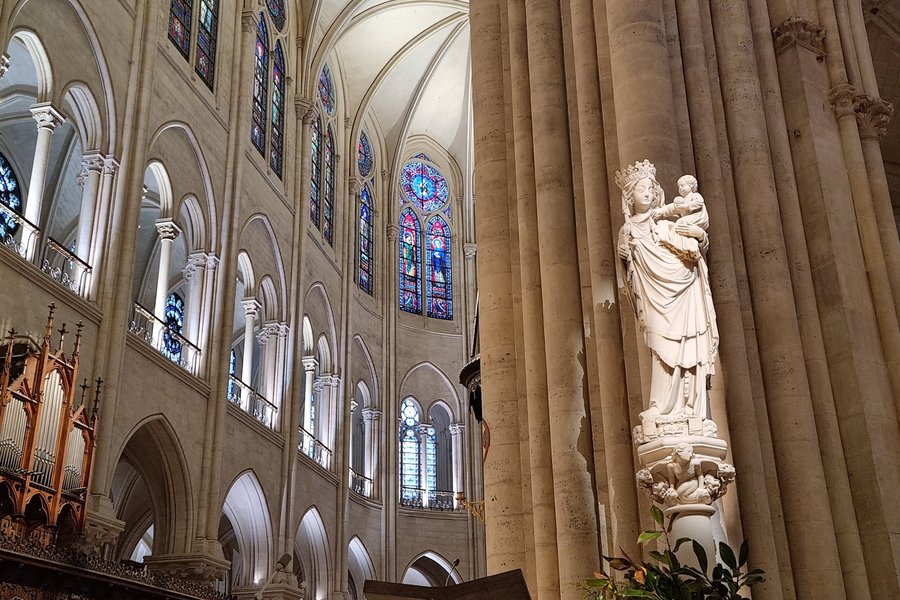
Hasn't everything already been said about this WHS? In fact, 2 events took place in 2024 that are worth looking at Paris again (and nothing to do with the Olympics!). First of all, the reopening of Notre-Dame de Paris in December 2024. On the headlines of the media around the world, many of us have seen these images of Notre-Dame fully restored. Wishing to form my own opinion on the quality of this restoration, I waited mid-January, until the media blast had subsided, and I was able to enter the cathedral without booking online and without queuing (okay, it was a Wednesday!). Despite the crowd inside, I was speechless looking at the colors and the stunning lighting. While the restoration of Chartres cathedral is clearly exaggerated, this one is, in my opinion, successful. The stone has been cleaned, cleaned a lot certainly, but we can see that it's an old building. Enclosure of the choir, stained glass windows, wall paintings by Viollet le Duc, I rediscovered the cathedral that I have known for almost 25 years. I particularly appreciated the "Mays", these large paintings offered by the parisian goldsmiths' corporation in the 17th century: their colors are resplendent. What a shame, however, that the archaeological excavations could not last a few more months... When one see the remains of the jube which have been found, one wonder what treasures are hidden under the choir! I hope the project of Notre-Dame museum located in Hôtel-Dieu will come true and will allow …
Keep reading 0 comments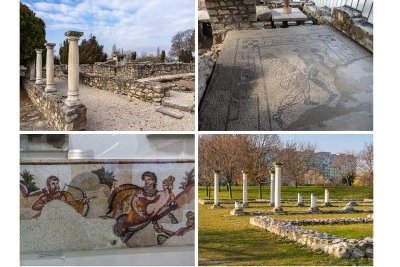
While in Budapest in November of 2024, I stopped by two of the locations of this serial submission.
Aquincum archaeological site marks the location of the capital of the Roman province of Pannonia in the 1st-4th centuries CE. The site is mainly about neat outlines of city structures, with a few columns and portals thrown in. One covered pavilion contains recovered mosaics. Unfortunately, there are a couple of defined components of the site – including the reconstruction of a Roman building called House of the Painter – that can only be visited on a very limited schedule which did not coincide with my plans for the day. So I only perused the onsite museum, which has a reasonable collection of artifacts dating back to Roman times.
I spent a little over an hour at the site, which should have been closer to two hours if all its parts were accessible throughout the day. Aquincum is not difficult to reach via public transport, as several bus routes and a couple of regional trains have stops nearby. I also stopped by the location marked on Google Maps as "Római maradványok" (Roman Remains) on one of the central squares of Óbuda, Florian Square, which corresponds to "Aquincum Obudai" in the listing on the right. There is not much to explore here: also a few wall outlines and a bunch of pillars. What I enjoyed the most was the curious visual contrast of the Soviet-looking apartment buildings on the western edge of …
Keep reading 0 comments
Suggestion for an updated nomination: future tentative list
Copenhagen remains without a world heritage site, though that may change in a few years. Rosenborg Castle would have been a prime candidate if it was put forward in the mid-1990's. However, today as a standalone monument? Despite its merits, a new approach is needed.
I would propose a Dutch Renaissance Castles of Denmark nomination centered on Rosenborg Castle and Frederiksborg Castle. In fact, the Dutch architect Hans van Steenwinckel the Younger was a favorite architect of Christian IV and played a significant role in both Rosenborg and Frederiksborg.
Denmark is pursuing more fossil and cliff site nominations . . . yeah, not so exciting. Yet, we have learned ICOMOS is not entirely opposed to more 'traditional' nominations, if the dossier is thorough and the selected criteria offers a unique quality or value worthy of inscription. The successful nomination of Mafra in Portugal comes to mind. I believe there is a fine balance for well-represented countries in regards to what kind of nominations they deliver to Paris. Yes, the Seaweed Houses in Denmark sound interesting, but that does not mean every new tentative nomination needs to be a cultural landscape, an example of vernacular architecture, or a transnational nomination.
Keep reading 0 comments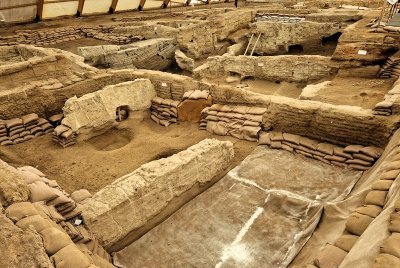
After reading the reviews of other users of the site, I realized that visiting Çatalhöyük is completely different now and requires a new review. In the end of 2023, a completely new museum was opened (although the name ‘interpretive center’ sounds better, since there are very few original artifacts here). Because of this, the place is no longer free, foreigners pay the equivalent of 5 euros - but believe me, it will be money well spent. The museum is well constructed and presents the history of the excavations and their importance very well. In an interactive way, you can learn a lot about archaeology, discoveries in the area of Çatalhöyük, and even how scientists came to specific conclusions. Great emphasis was placed on explaining the uniqueness of Çatalhöyük - the place had been continuously inhabited for almost two millennia and had an unusual, egalitarian social structure.
To get to know the entire museum well, you need to spend at least 1-1.5 hours, but after such a lesson, no one will have any doubts that they are viewing one of the most important archaeological sites in the world. Then you can go outside, to the replicas of ancient houses and to the site itself. There is no problem with mud anymore - you can walk everywhere via a new wooden ramp. Currently, only one stand is available, but the ramp also leads to the second one, which leads us to believe that its opening is also planned.
The archaeological …
Keep reading 0 comments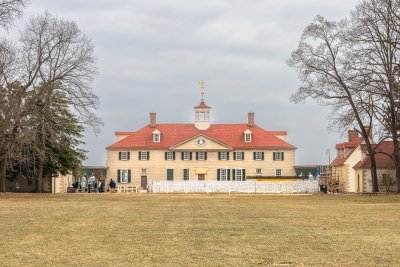
It just seems appropriate to visit and write a review of Mount Vernon after doing so with Monticello, as both were the residences and plantations of two prominent American presidents in Virginia. We visited the site in Dec 2024 as a side trip while visiting family for Christmas. Whether it has the potential to be inscribed or not and regardless of our opinions about George Washington as a slave owner, I'd recommend a visit here.
The mansion tour
At the time of our visit, the mansion was undergoing significant renovation (see photo, with the facade obstructed by tarpaulin) and only a very limited part of the mansion could be accessed. It was helpful to attend the free virtual tourat the Ford Orientation Centre. We entered the mansion through the door that opens to the New Room. This multi-purpose room is the most interesting (to me) of all the rooms in the mansion. Its walls are painted in pastel green, and it has a Palladian window with composition ornament and a ceiling with stuccowork. Our tour guide pointed out some interesting artwork as well, such as the paintings (check out Trumbull's Washington at Verplanck's Point) and the motifs on the marble mantelpiece.
We stepped out of the mansion (yep, that was it!) and took in the view of the Potomac River from the veranda (and yes, the view is beautiful as Els pointed out). We then went to the kitchen and storehouse located in the lower garden. …
Keep reading 0 commentsIlya Burlak
Caves of the Buda Thermal Karst System
Caves of the Buda Thermal Karst System (On tentative list)
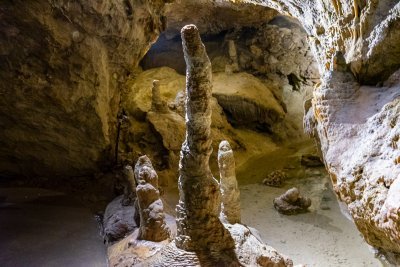
I visited Pál-völgyi Cave during my stay in Budapest in November 2024. I did not plan to see more than one cave in this serial submission, and based on my research, Pál-völgyi provided the best balance of accessibility and interest of the six of them. The roughly half-kilometer subterranean walk takes about an hour to complete.The visit is always guided and always in Hungarian. Foreigners are directed to download an app with an audio guide in several languages. The English version is narrated in such a boring and tedious fashion that I put the phone away after the second stop. The live guide was occupied by a group of local teenagers on a school field trip. He did point out a couple of highlights to me in English, but otherwise made only a passing effort to ensure that the tour did not leave the only non-Hungarian-speaking person too far behind, and I was able to linger here or there on my own.
The cave walls exhibit dripstone formations throughout, including named attractions such as the Organ, the Zoo, or the Theater. Probably the most eye-catching chamber is the one known as the Wonderland, headlined by a group of stalagmites called Snow White and the Seven Dwarves.
There is no real wow factor here. The appeal of exploring a cave will vary among visitors, and if you are a cave aficionado, this will not be the most impressive cave you've ever seen. It is hard to define what may …
Keep reading 0 comments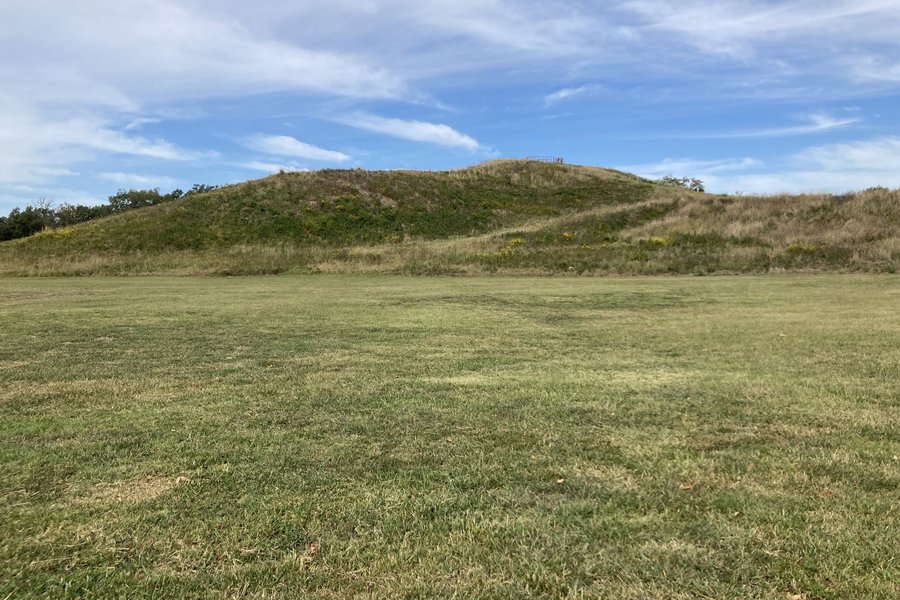
I'll admit, I recognize their historical importance, but I have a hard time truly appreciating the earthworks sites such as Poverty Point (I've visited two of the three in the United States, having also visited Cahokia Mounds but not yet visiting Hopewell). It's one thing to recognize on an intellectual level that these required tremendous planning and effort to build these structures, but on a visceral level, I hate to say it, but it feels like you're just looking at or climbing a small hill. I think my visit to Poverty Point was also marred by the fact that, as I perused the small visitor's center to try to understand the cultural significance of the site, the loudspeaker was blaring Vanessa Williams singing The Color of the Wind from Disney's Pocahontas movie.
Keep reading 0 comments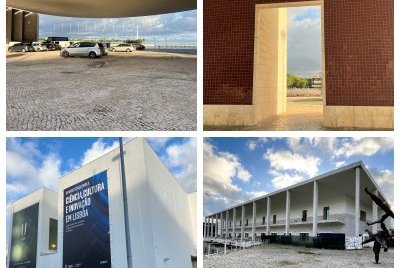
In 2020 I visited two of Siza’s works in Northern Portugal: a bank in Vila do Conde (something white and Le Corbusier-ish with many windows in a street with mainly traditional buildings) and the Casa Carlos Beires in Pavoa de Varzim (a yellow family house located in a residential area with other interesting modern buildings, looking very run down). Both have since been dropped from the shortlist of this nomination, so I had to return to Portugal to reclaim my ‘tick’.
The Pavilhão de Portugal serves this purpose very well, as it lies only 3 stops by metro (disembark at Oriente) from Lisbon Airport. I visited it during a stopover for a few hours on my way to Cabo Verde. The Pavillion is considered one of Siza’s main works, so it is a sure bet. I knew it was undergoing renovations and I wasn’t expecting much from the area either, since former fairgrounds such as these often fail to find a new use. It proved to be a bustling area though, mainly attracting Lisbon’s youth. There is a big modern mall adjacent to the metro station, and I found an endless line of 14-year-old girls waiting for a concert by Gracie Abrams to start in the MEO Arena.
The City has not long ago sold the Pavillion to the University of Lisbon. They are renovating the usable half, adding airco and making it liveable in general. The other half, the one with the curved roof and the tiled …
Keep reading 0 comments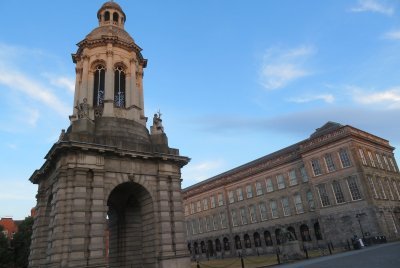
Suggestion for an updated nomination: future tentative list
I do not see a particularly strong justification for Dublin to become a world heritage site, but Trinity College stood out. While my experience seeing Trinity College was brief, I was impressed and the literary history here is legendary. The Library of Trinity College Dublinis stunning in its own right and a book-lovers dream.
Therefore, I would suggest something far grander. I would like to see the development of a serial candidature for world heritage titled The Ancient Universities of the British Isles (Dublin, Edinburgh, Glasgow, Aberdeen, St Andrews, Oxford, and Cambridge). In such a nomination, the great institutions of higher learning on the British Isles would be recognized and the outstanding universal value clearly demonstrated. While such a nomination is highly unlikely in the short term, I could see such a nomination emerge down the road with the right advocacy and vision.
In writing this review and others (incoming) of former tentative sites, I want to explore potential options where the (ft) nomination could be reformulated to be worthy of inscription. Perhaps a review format of 'Top Missing' and in so doing, highlighting a phenomenon that we have sometimes seen - the long dormant tentative site reimagined.
Keep reading 0 comments
The parish enclosures of Finistère were added very recently to the French indicative list, and this nomination file should be put forward soon by France (perhaps 2029?). It was entrusted to a former French Minister of Culture, residing in Brittany, who contributed to the successful inscription of the city of Nice in 2021.One might wonder why France chose a bid focused once again on Christian architecture. In fact, this choice is more judicious than it seems.
First, these parish churches are very original. Modest in size but very decorated, they are made up of several elements: a decorated monumental porch, a surrounding wall, with a monumental entrance and an "échalier" (to prevent animals from accessing this sacred space), a sculpted calvary, and an ossuary.
These buildings provide a striking testimony of the Breton culture of death. To see how fascinated the Bretons were by this, I recommend the collection of stories of "La légende de la mort" by Anatole Le Braz: the stories about "Ankou" (personification of Death) are among the most fascinating.
Finally, these churches were not financed by the local nobility, but by associations of peasants enriched by the cultivation of flax in the 16th and 17th centuries (used for boat sails). At that time, Brittany was one of the richest regions in Europe, and Breton merchants were present in all the ports of Europe. Thanks to this and the invention of printing, this part of Brittany was influenced by architectural styles from France, Italy …
Keep reading 0 comments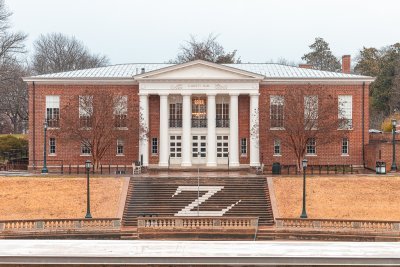
This site was the first of the few UNESCO sites I visited during my trip to the US in Dec 2024. It made for a great stop on my way to spending the holidays with family in Virginia. I made sure that we visited both Monticello and the University of Virginia campus, which I think is the best way to really appreciate the OUV of this site.
Monticello
Monticello was Thomas Jefferson's primary plantation and house, situated on a hill or a small mountain ('Monticello' in Italian) southeast of Charlottesville. We visited the site on a sunny but bitterly freezing afternoon on the first day of our stay in the town. The entrance to the site and the David M Rubenstein visitor centre sit just below the hill. It is highly recommended to watch the introductory film being screened at the theatre, as it gives you a rough introduction to Thomas Jefferson, his time in the plantation, and the plantation itself. You may also want to visit the Robert H. and Clarice Smith Gallery, which has excellent exhibitions featuring the fruits of Jefferson's ideas and work.
To access the house, you would have to join a tour or purchase the Grounds Ticket, which allows you to wander around the gardens and grounds at your own pace. In our case, we booked the Highlights Tour, a 45-minute guided tour that would give you an overview of the president, a tour of the first floor spaces of …
Keep reading 0 comments
This is my second non-visit review within a few months. I really hope this is not becoming a regular thing. I tried to visit the Chongming Dongtan Bird Habitat. Strictly looking at the map, this is by far the easiest place to visit, as it is very close to Shanghai.
I took a taxi from the center and left Shanghai at lunch time. The DiDi app predicted 1h50min to get there, which is 30min longer than Google Maps (with no access to any traffic information, because technically banned) told me, when I planned this at home. The price was predicted with around 40 EUR per way, which is not too bad for 2 hours driving. There are also no other options than taxi, so it’s that or you know someone who can drive you there.
Traffic was actually no issue within Shanghai, just the millions of traffic lights slow you down a bit. The real problem is following: there is only one connection between the mainland and Chongming island. And worst of all, it’s a toll way. About 5km from probably the toll booth, there was a crazy traffic jam. Not too crazy in terms of length. The drive could pass at least half of the line, before he sneaked in. The problem was, that the line basically did not move at all. After spending over an hour in the traffic jam, the driver made me understand that it would be almost dark until we arrived our destination. …
Keep reading 0 comments